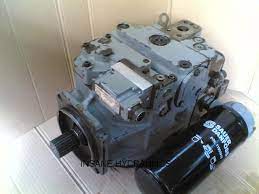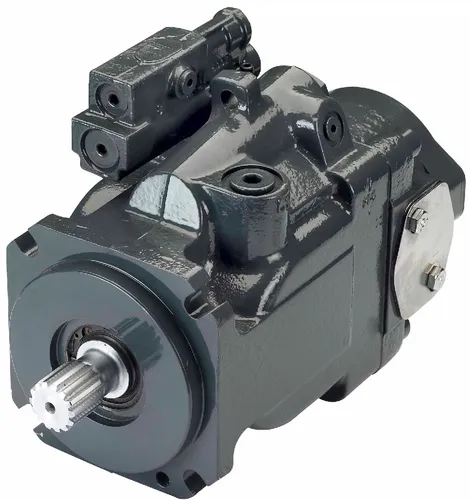FAQ: How to drive an excavator?
how to drive excavator?
The backhoe is a popular tractor attachment used for digging and moving dirt. It is also called an excavator, but in layman’s terms, it is known as a backhoe. It can be attached to the back or front of a tractor, depending on the job it needs to do. It has a seat for the driver and control levers that allow the driver to control the shovel bucket and the arm.
The backhoe controls are located on the left side of the seat when facing forward in the seat. They are typically located in a “V” pattern, with two levers pointing toward each other and a third lever pointing to the left. The two levers in the “V” shape are for controlling the movement of the arm, and this includes raising it up and down and moving it from side to side. The single lever on the left is for controlling the movement of the shovel bucket, which moves up and down as well as in and out.
Is it hard to drive an excavator?
The question of how difficult it is to drive an excavator is subjective. The answer could be, “Maybe a little hard,” or, “Not very hard at all.” It depends on the person driving it and their background with equipment. Someone who has no experience in construction may have a much harder time driving an excavator than someone who has worked in the industry for years.
If you’ve only driven a car before, you might find an excavator a bit awkward to drive at first. All of the other vehicles you’ve used have been much smaller and likely had a single seat for you to sit in. When driving an excavator, there will be multiple seats and levers that you need to get used to working with before you can feel comfortable in the machine. You’ll also need to get used to the size of the vehicle—it’s much larger than anything else you’ve ever driven, so it’s important to remember that when turning or moving forward.
One of the most important things is to follow all safety measures when operating any heavy machinery. Read the owner’s manual thoroughly before getting behind the wheel of an excavator so that you know all of its features and what they do.
How do I learn to use an excavator?
The best way is to take a class in which you can learn the basics on how to operate the machine, as well as safety procedures. This is often done through local vocational schools or community colleges.
You can also attend a trade school that offers programs for heavy equipment operators, such as earthmoving equipment operators. These programs tend to be more comprehensive than those offered by vocational schools and community colleges because they cover all types of heavy equipment, not just excavators.
If you have no prior experience with heavy equipment, you should consider taking the time to get some practice first before attempting to operate your own excavator machine. At least this way you’ll have some idea of what it’s like when operating one of these machines and what kind of skills are required for safe operation.
How do you control an excavator?
Operating an excavator is not easy, and it takes a lot of skill and attention to detail. If you’re operating an excavator, you’re in luck! Here’s how you do it:
1. You will want to climb into the cab of your excavator, and get comfortable by adjusting the seat and hopefully turning on the AC.
2. To move forward and backward, you’ll push down with your left foot to start moving forward and lift up to reverse or stop.
3. To turn your excavator left or right, you’ll pull back with your right foot to go left, and push down with it to turn right.
4. To raise or lower your bucket, you’ll use your right hand to control that by pushing it forward to dump out the contents of the bucket, and pulling back to retract the arm.
5. To rotate the body of the excavator, you’ll use your left hand to pull back for counter-clockwise turns and push forward for clockwise ones. When parked on a slope, counter-clockwise rotation will help keep the machine from rolling down hill because it will tend to dig in deeper than when it is rotating clockwise at the same location on a slope.
What is the proper position for digging with an excavator?
The proper position for digging with an excavator is to be seated in the operator’s seat, facing the front of the machine. The operator should wear safety glasses or goggles, hearing protection and gloves. It is also recommended that the operator wears long pants and boots.
The operator should sit up straight and keep both hands on the controls at all times. The right hand should be used for controlling the boom and blade while the left hand controls movement of the stick or bucket.
When digging in areas where there are overhead power lines, it is important to make sure that these lines are clear before digging begins. If there is any doubt about whether or not you can dig safely under these power lines, contact your local utility company before starting work so they can advise you on how best to proceed.
What should you not do with an excavator?
There are some things you should not do with an excavator. Here are a few:
Do not use the excavator to pick up an object that weighs more than the manufacturer’s recommended capacity. The weight of the load will exceed the excavator’s capacity, causing serious damage to both the machine and the operator.
Do not use the excavator as a ladder. If you need to climb onto something, use a ladder instead of exposing yourself to injury from falls by using your machine as a ladder.
Do not over-extend your boom or arm beyond its rated maximum reach without additional counterweighting (additional ballast). This can cause loss of control of the machine, resulting in personal injury and damage to property.
Do not operate your machine if it has been dropped or damaged in any way that could affect its safe operation.
What makes a good excavator operator?
A good excavator operator is someone who knows how to use that machine. They know how to operate it safely and efficiently. They are constantly learning new techniques, improving their skills and learning new equipment.
A good excavator operator knows how to maneuver the machine in all sorts of different terrain conditions. They understand how weight distribution affects performance, as well as how to compensate for this when necessary. A good excavator operator will understand when it’s safe to work in an area and when it’s not safe to work in an area based on their knowledge of the job site and the equipment they’re operating.
A good excavator operator can troubleshoot problems with the machine quickly and efficiently so they can get back on task as soon as possible. They’ll also be able to operate multiple types of machinery if necessary so they don’t have to wait around for a specialist who only works on one type of machine (for example).
How do I become a good excavator driver?
To become a good excavator driver, you must understand the machine’s operations and know the tools available to help you evaluate the conditions of the ground you’re working with. You’ll also need to practice your hand-eye coordination and learn how to communicate effectively with others on your crew. While it can take years for some people to become skilled operators, there are a few simple steps that can help you get there faster.
First, learn how the excavator works. Read the operator’s manual and familiarize yourself with all of its controls and functions. Become familiar with the various types of buckets and other attachments used with excavators, as well as their uses. It’s also important to understand how to read the gauges in order to operate the equipment safely.
Next, study up on basic excavation techniques. Learn about trenching and shoring, as well as proper backfill procedures. Understand what happens when soil is moist or dry, and learn how things like humidity or temperature affect your work. Also, realize that while machines can do wonders for excavation projects, they can’t complete every task—sometimes it’s best to use just your hands or a shovel!
How many times can an excavator spin left?
According to a study from the University of Washington, if you were to break down the number of times an excavator can spin left, you would find that it is actually mathematically impossible for an excavator to spin left even once. This is because excavators are unable to turn in any direction other than right.
If this sounds like a joke, it’s not—the research proves it. Here’s how they did it: The researchers took a one-quarter scale excavator and had it perform 10 test spins in both directions. They found that while the excavator could spin right exactly the number of times that was predicted by theory (9,823), the truck could not spin even once when headed left.
But why? Why can’t an excavator ever spin left? The answer lies in an obscure area of mathematics known as “right-turning theory”. In short, it states that all vehicles on earth with two or more wheels must always turn right—this is something we’ve all been taught since kindergarten for safety reasons, but turns out to be something that’s also true at a mathematical level.
How fast can an excavator drive?
It’s a question you’ve probably never asked yourself, but it’s good to know how fast your excavator can go in case of an emergency. It’s not a question that has a simple answer though. The speed of an excavator depends on the type of excavator, the size of the excavator and what kind of attachments are on the excavator.
The average speed of an excavator is 5-6 miles per hour (8-10 kilometers per hour). This is when they are traveling on level ground without any attachments on them. The speed will vary depending on the type of terrain they are traveling over. The size of the machine also affects the speed. A small mini excavator can get up to 8 mph (13 kph) on level ground with no attachments. A large machine can only travel about 4 mph (6 kph) under these same conditions.
The number and weight of attachments will also affect the speed of an excavator. If you have one bucket, it will slow down more than if you have two buckets or none at all. Adding another bucket will slow it down even more, and so forth until you reach a point where adding more buckets will not slow it down any more than it already is.

How long does it take to learn to drive a digger?
It can take around six months to learn to drive a digger, but it really depends on your experience and the type of digger you’re learning to operate.
There are two main types of diggers: wheeled and tracked. Wheeled diggers are the most common, and they can be found in any construction or demolition site. Tracked diggers are used in mining and quarrying operations, where they’re often called loaders or shovels.
The first step in learning to drive a digger is to get yourself familiar with all the controls inside the cab. You should also be familiar with all the safety measures that will protect you while you’re on site – this includes wearing protective clothing such as high visibility vests and hard hats, as well as making sure that you have eye protection (goggles) in case there’s dust blowing around from any nearby machinery or materials being moved around.
Once you’ve got those basics down, it’s time for some practice! Start off by walking around the site with an experienced driver so that you can get an idea of how everything works together – this will help you understand how things work when there’s more than one person operating machinery at once (which happens quite frequently).
How do I turn my excavator on?
The first step in turning your excavator on is to make sure that it is properly wired and grounded. If you’re using a hydraulic excavator, the engine may be directly wired to the hydraulic pump, or it may be indirectly wired via a battery.
The next step is to ensure that all of the safety switches are turned off before attempting to start your machine. These switches are designed to prevent accidental starting, which can lead to serious injury or death if ignored.
After ensuring that everything is clear and safe, you can begin the process of starting your excavator by turning on the ignition key (or pressing down on the starter button). This will send power through the starter solenoid, which turns over the engine’s crankshaft until enough torque has been generated for it to start running.
While waiting for your machine to start up, check all gauges and warning lights on your dashboard panel for any signs of problems (such as low oil pressure or high temperature). Once everything looks good, turn off all warning lights by pressing their respective buttons on the dash before proceeding with normal operation of your excavator!



